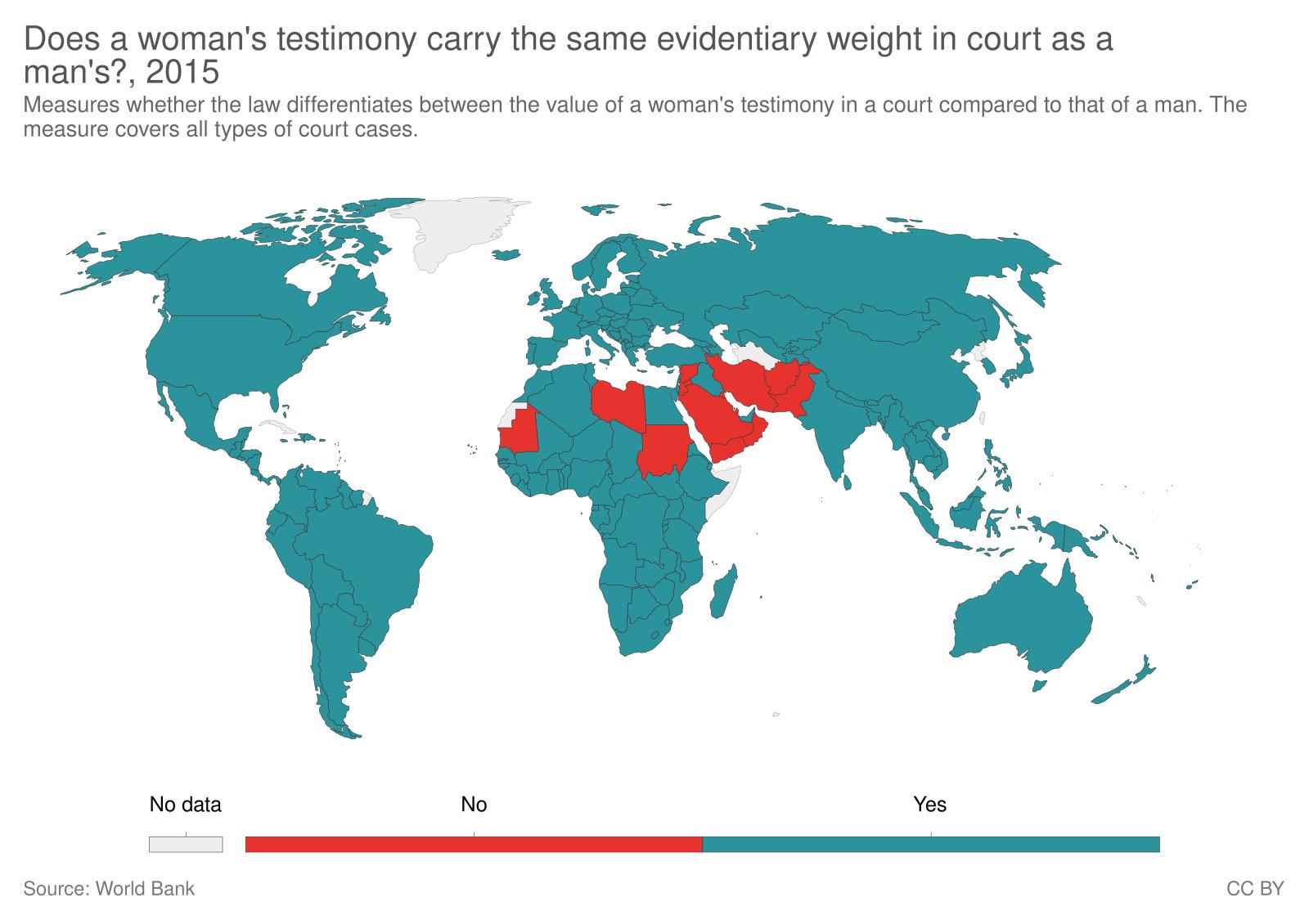Map of Gender Disparities in Testimony Credibility


Marcus Rodriguez
Historical Geography Expert
Marcus Rodriguez specializes in historical cartography and geographic data analysis. With a background in both history and geography, he brings unique...
Geographic Analysis
What This Map Shows
This map visually represents countries where women's testimony is not given the same weight as men's in legal and social contexts. It highlights significant disparities in gender equality, particularly regarding how women’s voices are perceived in various judicial systems. As we dive into this critical topic, it’s essential to recognize the profound implications that these differences have on women’s rights and societal roles globally.
Deep Dive into Gender Disparities in Testimony Credibility
The weight of a person’s testimony can significantly impact legal outcomes, social standing, and personal safety. In many countries, cultural, legal, and systemic biases lead to a situation where women’s testimonies are often deemed less credible than those of their male counterparts. This phenomenon is not a mere abstraction; it has real-world consequences for women, affecting everything from their ability to seek justice in cases of violence to their participation in civic life.
Interestingly, the disparities in how testimonies are valued can often be traced back to deeply ingrained cultural norms and historical precedents. For instance, in countries where patriarchal systems dominate, societal beliefs may support the notion that women are less reliable or rational than men. This perception can be reinforced by legal frameworks that do not recognize or protect women's rights adequately.
Statistics reveal stark contrasts: in some regions, women's testimonies in court may require corroboration from male witnesses to be considered valid, while men face no such requirements. For example, in certain Middle Eastern nations, the legal weight of a woman’s statement may be only half that of a man’s in specific contexts, particularly in matters such as inheritance or custody.
Furthermore, the lack of female representation in legal systems can exacerbate these inequalities. When the judiciary is predominantly male, the likelihood of biases affecting judicial outcomes increases, which can create an environment where women's voices are systematically diminished.
Regional Analysis
The map categorizes countries into different zones based on the credibility of women's testimonies. In regions such as the Middle East and parts of Africa, the disparities are pronounced. For instance, in Saudi Arabia, women have historically faced significant barriers in legal settings, where their testimonies regarding domestic violence or sexual assault may be undervalued. This contrasts sharply with many Western nations, where legal frameworks have evolved to support gender equality, although challenges persist even in these contexts.
In contrast, Nordic countries tend to score higher on gender equality indices, where women's testimonies are generally regarded on equal footing with men’s. Countries like Sweden and Norway have made strides in both legal reforms and societal attitudes, leading to environments where women can assert their rights more effectively.
Interestingly, Asia presents a mixed picture. In India, for example, women have the legal right to testify on equal grounds, yet cultural stigmas and societal pressures often mean their voices are still marginalized in practice. Conversely, nations like Japan are grappling with traditional views that can undermine women’s credibility, despite legal advancements.
Significance and Impact
The implications of this map are profound. Understanding where these disparities exist allows advocates, policymakers, and citizens to focus their efforts on creating legal reforms and cultural shifts necessary to promote gender equality. In an increasingly interconnected world, these issues are not confined to national borders; they reflect broader human rights challenges that call for international attention.
As awareness of these disparities grows, so too does the potential for change. Movements advocating for women's rights are gaining momentum globally, with calls for accountability and reform echoing in the halls of power. The roadmap to equality is complex, but recognizing these disparities is the critical first step in addressing them. Current trends indicate a slow but positive shift toward recognizing women's rights, with more countries beginning to take serious legislative steps to ensure that women's testimonies are valued equally.
In conclusion, the disparities reflected in this map are not just numbers and colors; they represent the lived experiences of countless women around the world. Addressing these inequalities is essential for fostering societies that value justice, equality, and human dignity for all individuals, regardless of gender.
Visualization Details
- Published
- October 20, 2025
- Views
- 52
Comments
Loading comments...